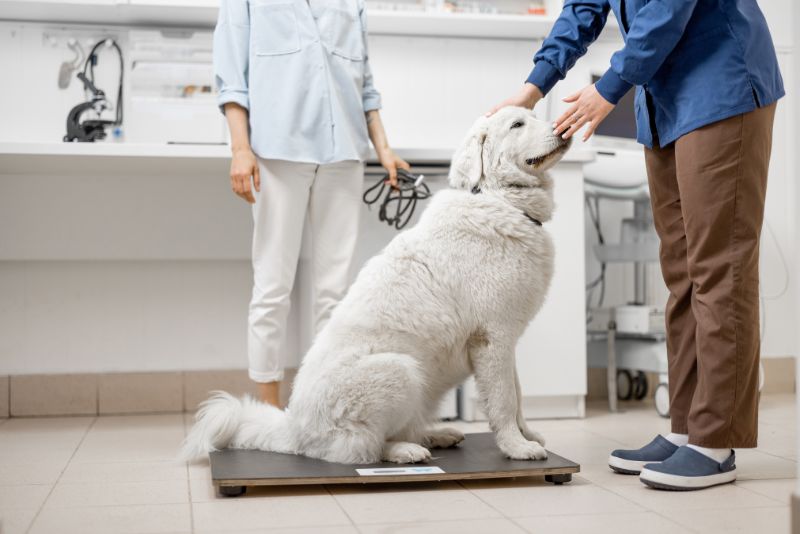While you’re likely to know someone with diabetes, if you’re like some pet owners, you may be surprised to learn that diabetes can be present in pets, as well. Just like humans, dogs and cats can develop diabetes mellitus in one of two forms:
Type I Diabetes: This type of diabetes, also known as insulin-deficient diabetes, is present when a pet cannot produce or does not produce enough insulin.
Type II Diabetes: Type II Diabetes, or insulin-resistant diabetes, in dogs occurs when a dog’s body makes insulin, but either doesn’t produce enough of it or has an insensitivity or resistance to insulin.
At Continental Animal Wellness Center in Flagstaff, AZ, we know you want your dog to lead a happy and healthy life. As the only animal wellness center in the area, the health and wellbeing of every animal we treat is our focus. We’ve put together this guide to provide you with more information about the signs and symptoms of diabetes in dogs, as well as the types of treatments available.
Are you concerned that your dog is exhibiting symptoms of diabetes? Please contact your veterinarian to schedule a visit and discuss your concerns. While you may find the content in this article helpful, it is not a replacement for veterinary care and treatment.
What is Diabetes in Dogs?

Nearly all dogs with diabetes present with Type I Diabetes. Though rare, dogs can develop Type II diabetes. Though the type identifies the cause and determines how to treat diabetes in dogs, the effects on your dog’s body are the same.
When a dog suffers from diabetes, excess sugar builds up in their blood where the cells that need it cannot access it. Starved of the fuel they need for specific organ cells and muscle cells to function, a dog’s body will begin to break down fats and protein in the body, while high glucose levels in the bloodstream cause damage throughout the body to nerves, blood vessels, and organs.
Upon learning that their dog has diabetes, many owners are interested to know what causes diabetes in dogs and wonder if it can be cured. While there is no cure for diabetes in dogs or any other animal, this chronic condition can be managed successfully. Though it isn’t always possible to pinpoint the cause when a dog develops diabetes, some common factors are present more frequently in dogs with diabetes:
Genetic predisposition:
Dogs with diabetes may have affected relatives, just as humans do.
Breed:
Certain breeds seem to be predisposed to developing diabetes, including (but not limited to):
- Beagles
- Miniature Schnauzers
- Keeshonds
- Pulis
- Miniature Pinschers
- Samoyeds
- Cairn Terriers
- Dachshunds
- Poodles
Medical conditions:
Dogs diagnosed with certain medical conditions may be at a higher risk of developing diabetes. The conditions most commonly associated with canine diabetes are:
- Cushing’s disease
- Obesity
- Pancreatitis
Sex:
Female dogs may develop temporary insulin resistance while pregnant or in heat.
What are the Symptoms of Diabetes in Dogs?

What are the signs of diabetes in dogs? All dogs are different, so their symptoms will vary. Early on in their dog’s disease, owners may notice some of these signs, which can be early symptoms of diabetes:
- Increased or excessive thirst
- Increased urination
- Increased appetite
- weight loss or weight gain
As a dog’s disease advances, they may experience more pronounced symptoms, including:
- Decreased or lack of appetite
- Decreased or lack of energy
- Depressed demeanor or other changes in attitude
- Vomiting
If diabetes isn’t diagnosed and treated until late in the disease’s development, dogs may experience significant health threats, including:
- Seizures
- Urinary tract infections
- Cataracts
- Kidney failure
- Ketoacidosis
How Diabetes is Diagnosed in Dogs

Diabetes can develop at any age, but it presents mainly in dogs aged five or older. Though some breeds appear predisposed to diabetes, mixed-breed dogs develop diabetes at or close to the same rate as pure-breed dogs. If you’re concerned that your companion is showing symptoms of diabetes or is exhibiting other behavioral changes, you should schedule a visit with your veterinarian for a thorough examination. The sooner a dog is diagnosed and begins treatment, the better.
You should expect your vet to take a thorough medical history at your appointment. Since your dog can’t speak up for himself, your observations are the second-best thing, so be sure to provide as many details as you can. Since dogs may mask signs of pain or distress, any new or different behavior may be relevant and help your vet understand the complete picture.
If your vet suspects diabetes, she will discuss your dog’s symptoms with you and order a series of standard tests for diabetes in dogs. Typically, testing for diabetes in dogs includes running a urinalysis, complete blood count, and chemistry. These may reveal a high concentration of glucose in your dog’s blood and urine, electrolyte imbalances, or high liver enzyme levels may also be present. Your veterinarian may also suggest abdominal X-rays or ultrasounds if they suspect kidney stones or other abnormalities.
Treatment of Diabetes in Dogs

Treatment for dogs with diabetes varies depending on the type of diabetes and any other health conditions or concerns present in your dog. A treatment plan for canine diabetes will include a combination of changes in diet and exercise alongside medications.
Medication:
Just as humans with diabetes require daily shots of insulin, your dog may also need daily insulin shots. Though many owners experience some initial apprehension upon hearing this, most find that it’s not as difficult or painful for their dogs (or themselves) as they had feared. Your vet will help you learn how to inject your dog correctly so it becomes a fast and straightforward part of your daily routine.
Exercise:
Diabetic dogs require moderate but consistent exercise routines to avoid peaks and valleys in their glucose levels, so your vet will discuss your current exercise regimen and any changes necessary with you.
Diet:
Diabetic dogs need to eat a diet of high-quality protein, typically with low-fat content and a balance of fiber and complex carbohydrates that help moderate glucose absorption. Your vet will discuss the type of food that’s best for your dog and may prescribe a prescription diet.
Monitoring:
Your vet will discuss any signs or symptoms you should be on the lookout for and develop a home monitoring plan to test your dog’s glucose levels at home, and may also instruct you to keep a ketones-testing kit on hand for at-home urine testing.
Suspect Your Dog May Have Diabetes?
When you adopt a dog into your family, you open yourself up to a whole new world of tail-wagging good times and plenty of tenderness, too. Our dogs bring so much joy and affection into our lives, so it’s only natural that we can be quick to worry when we notice changes in their behavior. Sometimes, the new behavior is nothing to fret about. Other times, though, minor changes can be symptoms of a more significant underlying problem. When you notice a change in your pet’s behavior or activities, your first call should always be to your veterinarian.
While you may worry when your dog is diagnosed with diabetes, there’s no need to panic. With early detection and a supportive care team, most diabetic dogs go on to live happy, normal lives with their favorite humans.
Do you have questions or concerns about your dog’s health or symptoms? The caring and experienced team at Continental Animal Wellness Center is here to help. We focus on the health and wellbeing of all our pet patients, incorporating traditional medicine and behavioral health into our compassionate and comprehensive care plans. Contact us today to schedule a visit for your dog.

